This article was co-authored by Max Rublyuk. Max Rublyuk is a Certified Professional Dance Instructor and the Owner of The Monarch Ballroom. With over 20 years of experience, he specializes in teaching International Standard Ballroom to people at all dance levels. Throughout his professional career, Max has won numerous dance competitions, including the Rising Star Professional Ballroom Championships at the Ohio Star Ball.
There are 24 references cited in this article, which can be found at the bottom of the page.
This article has been viewed 32,228 times.
The jitterbug, also called single time swing, is a lively dance that originated in the early 1900s and is still popular today. With its smooth, simple steps and upbeat music, this light, fun dance can be enjoyed by dancers of all ages.
Steps
Mastering the Basic Single Swing
-
1Bend your knees and tilt forward. You should have a strong core and light legs while you’re doing the jitterbug. Bend up and down at the knees, keeping your body aligned. Keep your back straight but tilt it forward from the hips, at about a 60-degree angle.[1]
- This will be your general body position when you’re doing the jitterbug. It should feel easy, loose, and natural for your body.
-
2Pulse slightly at your knees with your weight in the balls of your feet. To get comfortable in the position, gently bounce up and down on your knees, like you’re bouncing to music. Keep your weight in the balls of your feet, but don’t rise up onto your toes; let your heels remain on the ground.[2]
- You can lift one heel off the ground, then the other, to make sure that you’re fully balanced on the balls of your feet.
Advertisement -
3Shift your weight from one foot to the other, pulsing in time. Take a small step with one foot, then bend your knees and drop your weight slightly. Repeat with your other foot. If you’re practicing the leader’s steps, you’ll move your left leg first; if you’re practicing the follower’s, start with your right.[3]
- To give yourself a slight rhythm to rock to, you can say “1 and 2 and,” stepping when you say a number and rocking when you say “and.”
- This is one of your basic movements in the jitterbug, often called the “slow” movement because you’re moving right in time with the beat.
- Remember to maintain your balance and center. To take a step, simply lift your heel up gently and set it down. When you shift your weight, you should be moving your knees from a bent position to an even deeper bend.
-
4Practice the rock-step by stepping one foot backwards. To move into the second basic step, move one foot slightly behind you. If you’re dancing as the leader, step your left foot back. If you’re the follower, step your right foot back.[4]
- When you’re dancing, you’ll move the same foot back every time.
-
5Lift your front foot, then your back foot. Lift your front foot, springing lightly off the ball of the foot, then lift your back foot. You can lift your knee just slightly as well. Keep your chest and top half still and relaxed.[5]
- Although this is called the “rock-step,” you won’t actually being rocking your weight back and forth--when you’re dancing to music, you won’t have time! Instead, stay centered and balanced.
-
6Go back to your pulse step and shift once to either side. Pop your knees up a bit, letting your body feel the rhythm. Shift back and forth once, moving naturally.[6]
-
7Step 1 foot back and do 1 rock-step. Put the rock-step together with your pulse by stepping back with one foot. Lightly lift the front foot, then move the back foot forward again.[7]
- If you’re leading, move your left foot back; if you’re following, step back with your right.
-
8Count out loud to get the timing down. You should move faster through your rock-step than in your pulse. If you’re using the “1 and 2 and” count for your pulse, you can use “1, 2, 1,” for your rock-step to pick up the pace.
- Step backwards on 1, lift your front foot on 2, and move your back foot forward on 1.
-
9Return to your beginning pulse position and repeat. You should end your rock-step back in your beginning position, with both feet spread about shoulder-width apart. Go back into your pulse, doing one count on each side, then try the rock-step again.
- The more you move through these beginning 2 steps, the better you’ll get at feeling the jitterbug rhythm. The more advanced steps play off of these, so make sure you feel comfortable with them before moving on!
-
10Hold one hand with your partner if you’re dancing as a couple. Most moves in the jitterbug are easy to do by holding just one hand in the “open” position. Stand facing your partner and join hands, with the leader holding with their left and the follower with their right. Stand close enough together that you can join hands with your arms bent.[8]
- If you’re the leader, curl your hand over your partner’s so that it’s almost sideways. Lay your thumb on top of your partner’s hand. The hold should be light and relaxed.
- If you’re the follower, lay your hand palm-down in your partner’s.
- Try the steps a few times while facing each other. Let your hand move towards your partner while you’re moving backwards in the rock-step, staying relaxed and not pulling on your partner’s arm.
-
11Try the step in closed position to dance closer together. The leader’s right hand will go around the follower’s upper back, while the follower’s left hand goes on the outside of the leader’s shoulder. You’ll still be holding your other hands together, joining the leader’s left and the follower’s right hand.[9]
- When you do your rock-step, step your front foot back at an angle and rotate your body to open your chest up. Don’t step straight back, as this would separate you from your partner.
Trying the Follower’s Underarm Turn
-
1Start with a basic back and forth and rock-step. Hold your partner’s hand and start by doing your back and forth pulse and rock-step. Relax and settle into a rhythm together.
- Remember that you’re doing 1 pulse step and 1 rock-step each time. Count out loud so that you and your partner are on the same beat.
-
2Continue pulling the follower’s arm gently forward to start the spin. When you move your back foot forward out of the rock-step, take a larger step forward and pull the follower’s arm slightly forward. This will show the follower that you’re going to start a spin and help them start their momentum.[10]
- Don’t start to lift your arm or spin the follower yet; simply draw them forward by their arm.
- As the follower, step out of the rock-step in the direction that you’re being pulled.[11]
-
3Lift your shoulder up to gently spin the follower. Keep your elbow down to maintain a graceful line, lifting gently from the shoulder and raising your palm just over the follower’s head. They will spin out naturally as you raise your hand, then gently bring it back down.[12]
- Raising your elbow and whole arm will make your turn look sloppy. Instead, focus on keeping your elbow bent and raising your palm to just above the follower’s head.
-
4Cross behind the follower as they spin. Take one step as the follower spins, bringing your feet to a natural shoulder-width position. You should be facing your partner as they come out of the spin.[13]
- This isn’t strictly necessary--you can do the turn while standing still and your partner will simply spin around fully to face you, but it looks smoother and more graceful to move with them.
-
5Come out of the spin into a rock-step and continue the dance. Now that you and your partner are facing each other again, come back together rhythmically with a quick rock-step. Transition into the side-to-side pulse to continue the dance.[14]
- If you’re a beginner, you can also take a quick break after the turn. Talk to your partner and see how they felt about it and if you can do anything to improve.
-
6Start your spin with your resting elbow and shoulder as the follower. As the follower, once the leader lifts their arm to start the spin, draw up your free elbow and bend it across your chest. This will help to get your momentum moving in a spin. [15]
- To get into the spin as the follower, simply follow the leader’s movements.
-
7Follow this movement with your upper body as the follower. As your elbow pulls across, allow your shoulders and upper body to follow, then your hips. Turn your back knee towards your front knee and spin on 1 foot, with the other poised behind on the toe.
- Mentally separate your shoulders from your hips. Each part of your body should move separately, following each other naturally.
- You will end the spin facing the leader and ready to keep dancing!
Doing an Underarm Turn for the Leader
-
1Start with a side to side step and rock-step. Hold one hand with your partner and get into the rhythm with a few simple side to side step and rock-step combinations. Loosen up your knees and arms and relax into the movements.
-
2Step out of the rock-step towards the follower’s arm. The leader can also spin through an underarm turn! To initiate one, step slightly towards the follower’s arm as you come out of a rock-step. At the same time, gently pull their hand towards your opposite shoulder.[16]
- This will let the follower start to move away and behind you, giving you room to start your turn.
-
3Lift your arm and spin your hand so the palm faces up. Lift the arm that’s holding the follower’s hand and start to turn your body. This will lift the follower’s arm as well, giving you room to rotate underneath. Spin your lifted hand so the palm is facing up, which gives you more flexibility to rotate.[17]
- Bend your knees and move lightly on the balls of your feet as you turn.
- If you’re the follower, keep your palm facing down. Take one step behind the back of the leader so that you’re facing them as they come out of the turn.
-
4Try the handpass for a simple, stylish variation. As you come out of your rock-step, take the top of the follower’s wrist with your right hand and let go with your left. Step across so that your back is facing your partner and pass their arm around behind you. Switch hands behind your back so that you’re holding hands with your left hand again, then spin around to face each other.[18]
- As the follower, follow naturally around the leader’s back and slide around to face them as they turn.
- The handpass can be a fun way to mix things up if you and your partner already feel comfortable doing a regular turn.
Doing a Swing Hammerlock
-
1Hold both of your partner’s hands as you start to dance. Start in the open position and hold both of your partner’s hands, instead of just one. Begin by doing some easy side-to-side steps and rock-steps.[19]
- You’d typically hold just one hand in the open position, but for this move, you’ll need to be holding both.
-
2Twist the follower’s shoulders slightly one way, then the other. First, do 1 side-to-side step. Then, pull the follower’s right arm towards you gently, then push it back while pulling their left arm towards you.[20]
- This twist will help the follower build up some momentum to go into their spin.
- As the follower, swivel your shoulders and hips and allow your body to open up as you turn. You can move your right foot back, then forwards as you turn from side to side.
-
3Spin the follower from their bent elbow while still holding both hands. From this position, one of the follower’s arms will be straight, while the other will be bent. Lift their bent arm and initiate the turn while still holding onto their other hand.[21]
- As the follower, spin from your shoulders and upper body, then your hips and knees. Your other arm will be turning behind your back, but it shouldn’t be uncomfortable.
-
4Flip the follower’s bent arm behind their back as they turn. As you turn the follower with your top hand, draw their other arm across their back with your bottom hand. You should rotate your wrist around, flipping their hand so that their palm is facing out.[22]
- Flipping their hand like this makes the turn more comfortable for them and for you.
-
5End the spin with one arm across the follower’s body, holding hands. At the end of the spin, the arm that the follower didn’t use to spin around should be crossed behind their back. You should be holding that hand at their opposite hip, reaching across their body.[23]
- Your other hand will still be holding the follower’s hand, and you’ll both be facing each other.
-
6Do a rock-step while pushing slightly against the follower’s hip. From this slightly twisted position, start a rock-step. When you step forward, push back on the follower’s hip at a slight angle, opening up their body.[24]
- This tells the follower that you’re about to turn them out of this position. It also helps give them some momentum to carry them out of the turn.
-
7Spin the follower from her bent arm to come out of the twisted position. As you rock back in the rock-step, gently pull the follower along with you with the hand on their hip. Lift up your other hand as you do so, allowing her to turn underneath it and naturally spin out of the twist.[25]
- Since you’ve helped the follower gather some momentum by angling their hip, you can try to turn this move into a double turn. Simply continue to hold your hand up as they turns, leading them into a second spin.
- You can let go of their other hand as you turn them, so that you end up in the traditional open position with a one handed hold.
Polishing Your Steps
-
1Practice your basic steps without any music first. Before you start dancing to music, make sure you’ve got the basic steps down. Count out loud to help you find a rhythm and concentrate on perfecting each movement of your body.
- It might feel awkward at first, but mastering the moves without music will create the muscle memory to let you dance smoothly with music and other distractions.
-
2Dance to upbeat swing music once you feel comfortable. After you’ve got the basic steps and turns down, you can start putting your moves to music. Look up songs online or look for jive, jitterbug, or swing CDs to try multiple different songs.
- If you’re looking for music online, look up “jitterbug music” or “swing dance music.”
-
3Find an instructor at a dance studio to try more advanced steps. If you’ve gotten down the basic steps and turns and want even more of a challenge, look for a dance studio near you that offers lessons. You can also look online for helpful videos, or buy a DVD that teaches you more advanced moves.
- Search for “jitterbug dance lessons near me” online to find a dance studio that offers lessons. If you can, call ahead of time to see what moves will be taught and whether they’ll be challenging enough for you.
-
4Try out your steps at a swing club to dance with others. When you’re ready to show off your moves to others, head to a local swing club with a partner, or couple up once you get there. Swing dance clubs are lively places to try out an older but fun way of dancing, so don’t worry if you’re not an expert yet--just have fun!
- You can search online for swing dance clubs by searching “swing dance clubs near me.”
Community Q&A
-
QuestionIs this a 1950's dance?
 HelpingWithLoveCommunity AnswerThe Jitterbug was actually popular in the 1930's and 1940's. It was invented by a man named Cab Calloway. He made an recording in 1934 called “Call of the Jitter Bug” and a film called “Cab Calloway's Jitterbug Party”.
HelpingWithLoveCommunity AnswerThe Jitterbug was actually popular in the 1930's and 1940's. It was invented by a man named Cab Calloway. He made an recording in 1934 called “Call of the Jitter Bug” and a film called “Cab Calloway's Jitterbug Party”.
References
- ↑ https://www.youtube.com/watch?v=hCZy7UpIj2c&feature=youtu.be&t=1m24s
- ↑ https://www.youtube.com/watch?v=hCZy7UpIj2c&feature=youtu.be&t=3m57s
- ↑ https://www.youtube.com/watch?v=hCZy7UpIj2c&feature=youtu.be&t=4m50s
- ↑ https://www.youtube.com/watch?v=hCZy7UpIj2c&feature=youtu.be&t=5m37s
- ↑ https://www.youtube.com/watch?v=hCZy7UpIj2c&feature=youtu.be&t=6m1s
- ↑ https://www.youtube.com/watch?v=hCZy7UpIj2c&feature=youtu.be&t=8m15s
- ↑ https://www.youtube.com/watch?v=hCZy7UpIj2c&feature=youtu.be&t=8m32s
- ↑ https://www.youtube.com/watch?v=hCZy7UpIj2c&feature=youtu.be&t=8m56s
- ↑ https://www.youtube.com/watch?v=hCZy7UpIj2c&feature=youtu.be&t=10m54s
- ↑ https://www.youtube.com/watch?v=f2vMAiR3Fdg&feature=youtu.be&t=4m32s
- ↑ https://www.youtube.com/watch?v=f2vMAiR3Fdg&feature=youtu.be&t=4m35s
- ↑ https://www.youtube.com/watch?v=f2vMAiR3Fdg&feature=youtu.be&t=4m58s
- ↑ https://www.youtube.com/watch?v=f2vMAiR3Fdg&feature=youtu.be&t=8m53s
- ↑ https://www.youtube.com/watch?v=f2vMAiR3Fdg&feature=youtu.be&t=8m53s
- ↑ https://www.youtube.com/watch?v=f2vMAiR3Fdg&feature=youtu.be&t=5m20s
- ↑ https://www.youtube.com/watch?v=DtZNbQ60AxI&feature=youtu.be&t=39s
- ↑ https://www.youtube.com/watch?v=DtZNbQ60AxI&feature=youtu.be&t=2m1s
- ↑ https://www.youtube.com/watch?v=DtZNbQ60AxI&feature=youtu.be&t=2m57s
- ↑ https://www.youtube.com/watch?v=2JLMnUKxZzc&feature=youtu.be&t=37s
- ↑ https://www.youtube.com/watch?v=2JLMnUKxZzc&feature=youtu.be&t=1m4s
- ↑ https://www.youtube.com/watch?v=2JLMnUKxZzc&feature=youtu.be&t=1m7s
- ↑ https://www.youtube.com/watch?v=2JLMnUKxZzc&feature=youtu.be&t=1m57s
- ↑ https://www.youtube.com/watch?v=2JLMnUKxZzc&feature=youtu.be&t=1m11s
- ↑ https://www.youtube.com/watch?v=2JLMnUKxZzc&feature=youtu.be&t=1m15s
- ↑ https://www.youtube.com/watch?v=2JLMnUKxZzc&feature=youtu.be&t=3m3s
About This Article
The best way to learn the jitterbug is to learn the basic rhythm and rock-step. Bend your knees and tilt your back slightly forward. Step to one side and bend your knees a little deeper, then repeat on the other side, to a count of “1 and 2 and.” Add in the rock-step by moving one foot back, quickly lifting the front foot, and then moving the back foot forwards again to a quick count of “1, 2, 1.” Practice without music first, learning the rhythm in your body, then turn on the tunes! To learn how to do a turn, handpass, and swing hammerlock as both the leader and the follower, read on!













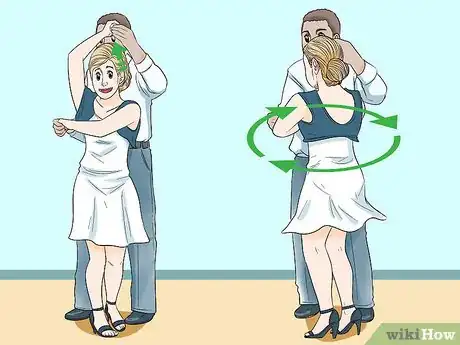



















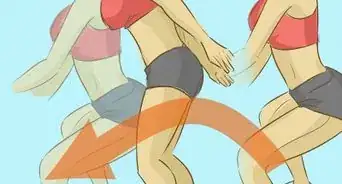

-Step-19-Version-2.webp)

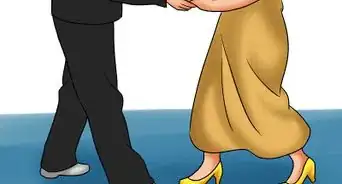
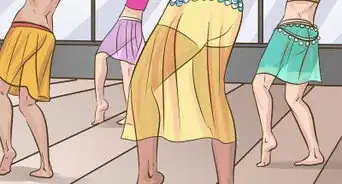
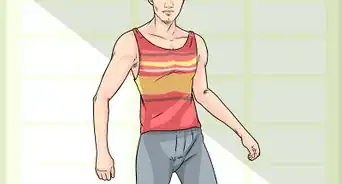
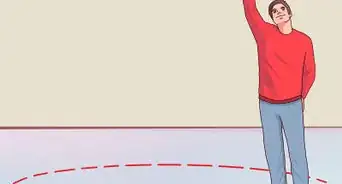

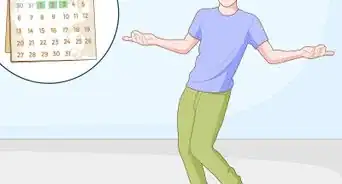
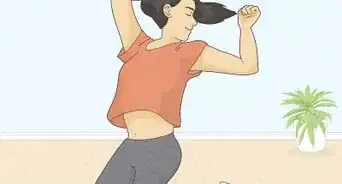
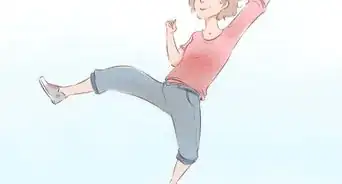








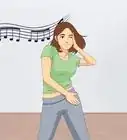
-Step-19-Version-2.webp)



































